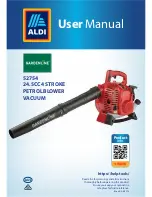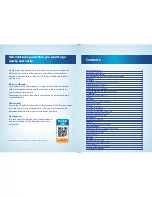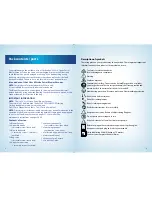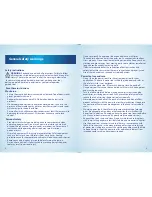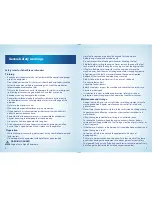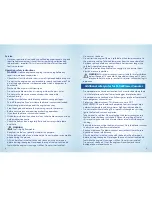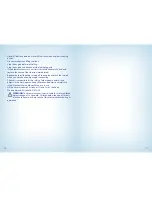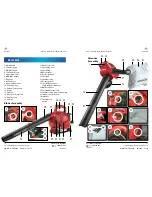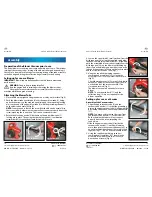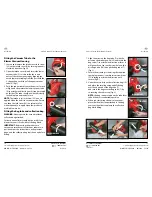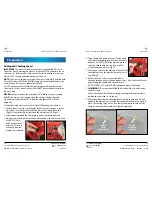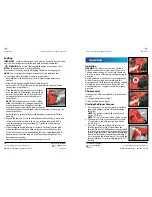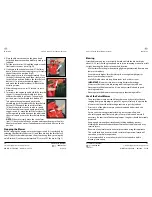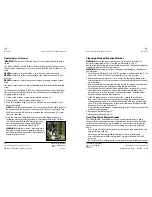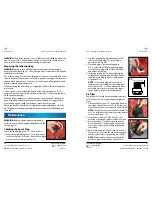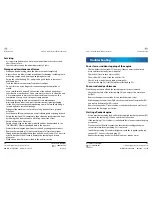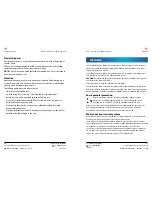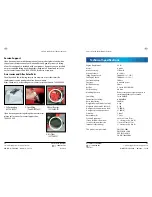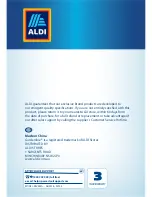
General safety warnings
Safety rules for Petrol Blower Vacuums
Training
• Read the instructions carefully. Get familiar with the controls and proper
use of the equipment.
• Non-skilled persons and first time users should read and understand the
full instruction manual before proceeding with use of the product or
recommended maintenance tasks.
• Only use the blower vacuum for the purpose for which it was designed,
i.e. blowing or vacuuming garden debris. Any other use can be
hazardous, causing damage to the machine.
• Never allow children or people unfamiliar with these instructions to
use the blower vacuum. Local regulations may restrict the age of the
operator.
• Never use the blower vacuum:
– When people, especially children, or pets are nearby.
– If the operator has taken medicine or substances that can affect his
ability to react and concentrate.
• Remember that the operator or user is responsible for accidents or
hazards occurring to other people or their property.
• Do not use unit around people with long hair.
• Dress appropriately. Do not operate with loose clothing or jewellery.
Ensure there is a gap between the air intake and the operator.
Preparation
• While blowing or vacuuming, always wear sturdy non skid footwear and
long trousers.
Do not operate the equipment with bare feet or open sandals.
WARNING: DANGER!
Engine fuel is highly flammable:
– Store fuel in containers specifically designed for this purpose.
– Refuel using a funnel and outdoors only.
Do not smoke while refuelling or whenever handling the fuel.
– Add fuel before starting the engine. Never remove the cap of the fuel
tank or add fuel while the engine is running or when the engine is hot.
– If fuel is spilled, do not attempt to start the engine but move the
machine away from the area of spillage and avoid creating any source
of ignition until the fuel has evaporated and the vapour dispersed.
– Replace all fuel tanks and containers caps securely.
- Add 4 stroke oil to the oil reservoir. Do not use 2 stroke oil.
Do not mix fuel and oil.
• Substitute faulty silencers.
• Before use, always inspect the machine and check that the screws are
not worn or damaged.
• It is advisable to wear suitable eye protection (safety glasses) ear
protection, and sturdy gloves when operating the blower vacuum.
Maintenance and storage
• Keep all nuts, bolts and screws tight to be sure the equipment is in safe
working condition. Regular maintenance is essential for safety and
performance.
• Never store the equipment with fuel in the tank inside a building where
vapour may reach a flame or a spark or a source of extreme heat i.e. a
water heater.
• Allow the engine to cool before storing in an enclosed space.
• To reduce the fire hazard, keep the engine, exhaust silencer, battery
compartment (if applicable) and fuel storage area free of grass, leaves, or
excessive grease.
• If the fuel or oil tank has to be drained, this should be done outdoors and
when the engine is cool.
• For reasons of safety, do not use the equipment with worn or
damaged parts.
Parts are to be replaced and not repaired. Parts that are not of the same
quality can damage the equipment and be dangerous for your safety.
• Fuel goes off fairly quickly. If you find your blower vacuum does not start,
first change the fuel in the tank with newly purchased fuel.
6
7

